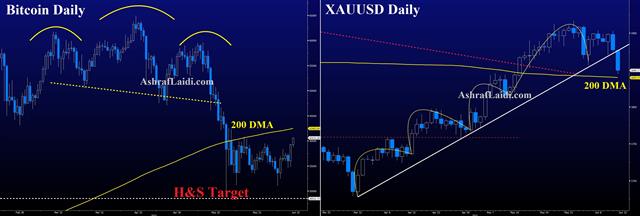Another Bond Conundrum

The weakest performing currency in the past week was the kiwi while the Swiss franc led the way. The move in the pair wasn't huge but that's a classic 'risk off' signal and it tees up the first theory:
1) Economic weakness
The past two non-farm payrolls reports have been weak and the drop in yields started immediately after the most-recent release. Maybe it's as simple as that? Markets often move on the second-derivative and while the US economy is growing at a +6% pace, the rate of change is no longer faster. Moreover, there may be too much optimism built into consumer spending going forward. Could the bond market and FX (to a lesser extent) simply be sending a warning sign?
2) Transitory inflation
The main economic indicator last week was CPI and it was above expectations at 5.0% compared to 4.7% y/y expected. Despite that, yields continued to fall. It's bordering on madness to be rushing into bonds at rates less than 1.5% when inflation is running at 5% unless you strongly believe that the worst has past. Perhaps the signal here is that high one-off items like used cars and durable goods will unwind in the year ahead, leading to an undershoot in inflation. This flies in the face of oil prices near 3-year highs but other commodity markets are showing cracks.
3) Infrastructure Is dying
Bank of America was out with a note last week saying its base case is still that Democrats will pass a $2 trillion infrastructure package via reconciliation. They must be seeing different news that us because some Democratic Senators appear to be digging in on a much smaller bi-partisan deal that would struggle to win left-leaning Democrats, or perhaps even the President. Politics is tough to handicap but the odds of an infrastructure deal are falling. That means less growth and less debt, which would both put pressure on yields.
4) Fed buying outpacing issuance
Due to seasonal effects, the Fed's QE programs are currently larger than US bond issuance. Could it be as simple as that? At times small imbalances in markets can lead to large moves but 20 bps in 6 days on something anyone with a calendar and calculator could see coming? That's a stretch.
5) Foreign flows
This is one of those cop-out answers that's impossible to prove before or with later data. We wrote earlier about the insanity of buying something that pays 1.5% when inflation is 5% but it's certainly a more-sober move than holding bunds at -0.27% or Japanese 30s at 0.65%. What's missing from that puzzle is the timing. We're not at quarter end; there's no obvious catalyst.
6) Short squeeze
This fits into the same 'usual suspects' category as flows but our many of friends in the bond market believe it. There is a large and durable short base in the Treasury market in a trade that was seen just a week ago as a sure thing – with only the timing in dispute. If this is a squeeze, it will reverse in a week or two and everyone will pretend it never happened.
Final Thoughts
What's most concerning – and probably right – is that it's a bit of all these elements. At some point though, price action itself because the story. That's particularly spooky if shorts haven't yet capitulated because if they do, we could see this move accelerate. That could create a feedback loop of risk aversion and some real turmoil.
With the Fed on tap for Wednesday, the stakes are suddenly higher.
Latest IMTs
-
5 Stocks Worked for me Best in 2025
by Ashraf Laidi | Dec 5, 2025 14:42
-
Silver 150 Highly Plausible
by Ashraf Laidi | Dec 4, 2025 11:19
-
4264 Gold
by Ashraf Laidi | Dec 2, 2025 13:56
-
Bitcoin & 35 Pct
by Ashraf Laidi | Dec 1, 2025 11:10
-
Forecaster App التطبيق الذي كنت تنتظره
by Ashraf Laidi | Nov 30, 2025 9:55







